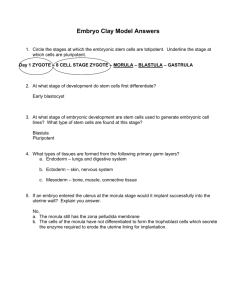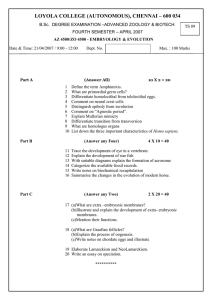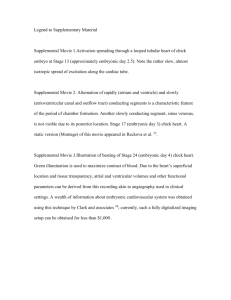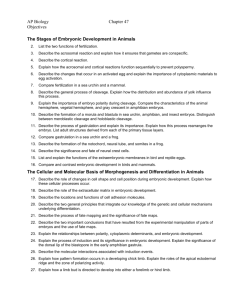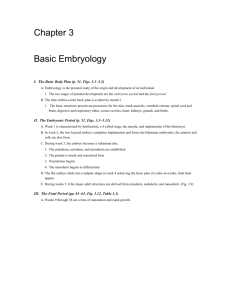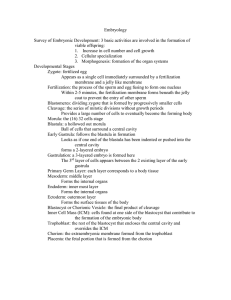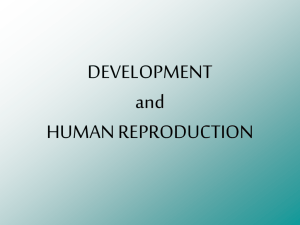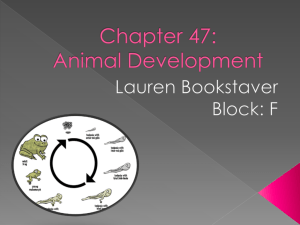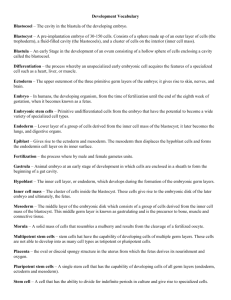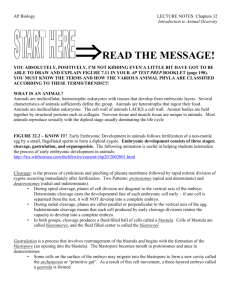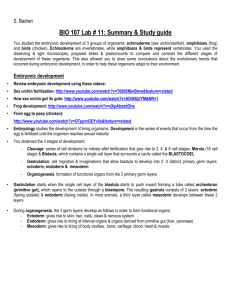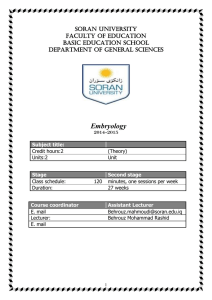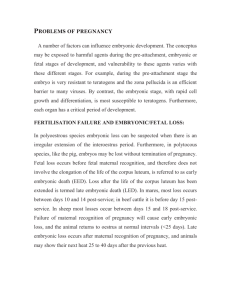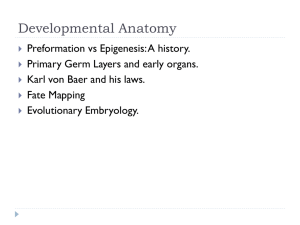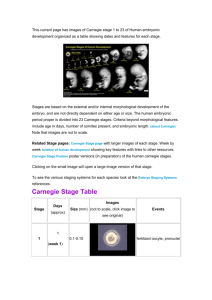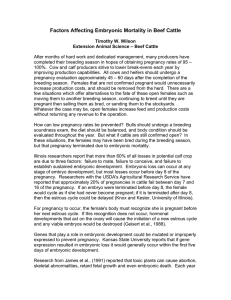Embryology study guide
advertisement
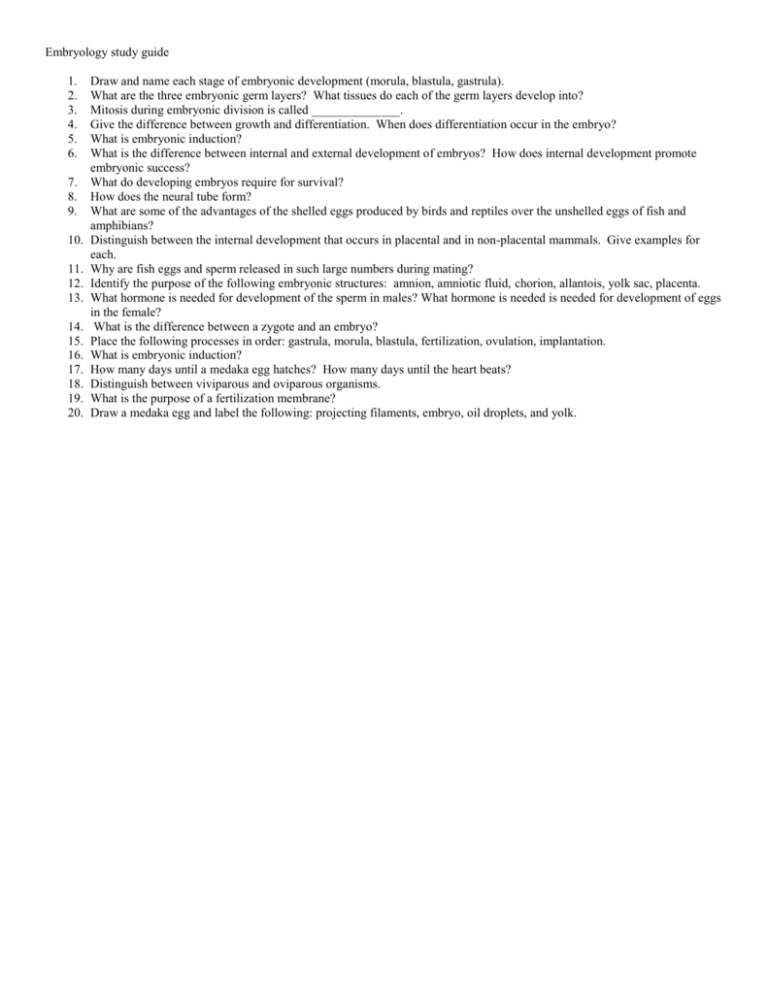
Embryology study guide 1. 2. 3. 4. 5. 6. 7. 8. 9. 10. 11. 12. 13. 14. 15. 16. 17. 18. 19. 20. Draw and name each stage of embryonic development (morula, blastula, gastrula). What are the three embryonic germ layers? What tissues do each of the germ layers develop into? Mitosis during embryonic division is called ______________. Give the difference between growth and differentiation. When does differentiation occur in the embryo? What is embryonic induction? What is the difference between internal and external development of embryos? How does internal development promote embryonic success? What do developing embryos require for survival? How does the neural tube form? What are some of the advantages of the shelled eggs produced by birds and reptiles over the unshelled eggs of fish and amphibians? Distinguish between the internal development that occurs in placental and in non-placental mammals. Give examples for each. Why are fish eggs and sperm released in such large numbers during mating? Identify the purpose of the following embryonic structures: amnion, amniotic fluid, chorion, allantois, yolk sac, placenta. What hormone is needed for development of the sperm in males? What hormone is needed is needed for development of eggs in the female? What is the difference between a zygote and an embryo? Place the following processes in order: gastrula, morula, blastula, fertilization, ovulation, implantation. What is embryonic induction? How many days until a medaka egg hatches? How many days until the heart beats? Distinguish between viviparous and oviparous organisms. What is the purpose of a fertilization membrane? Draw a medaka egg and label the following: projecting filaments, embryo, oil droplets, and yolk.
